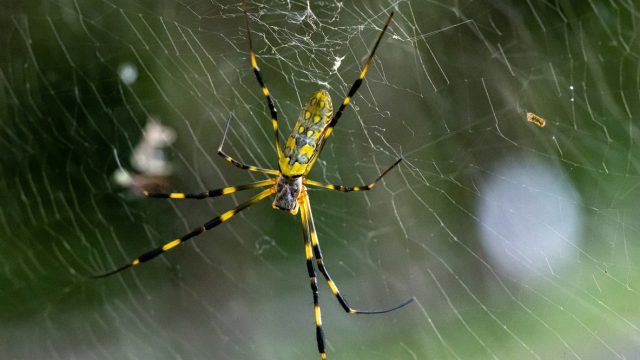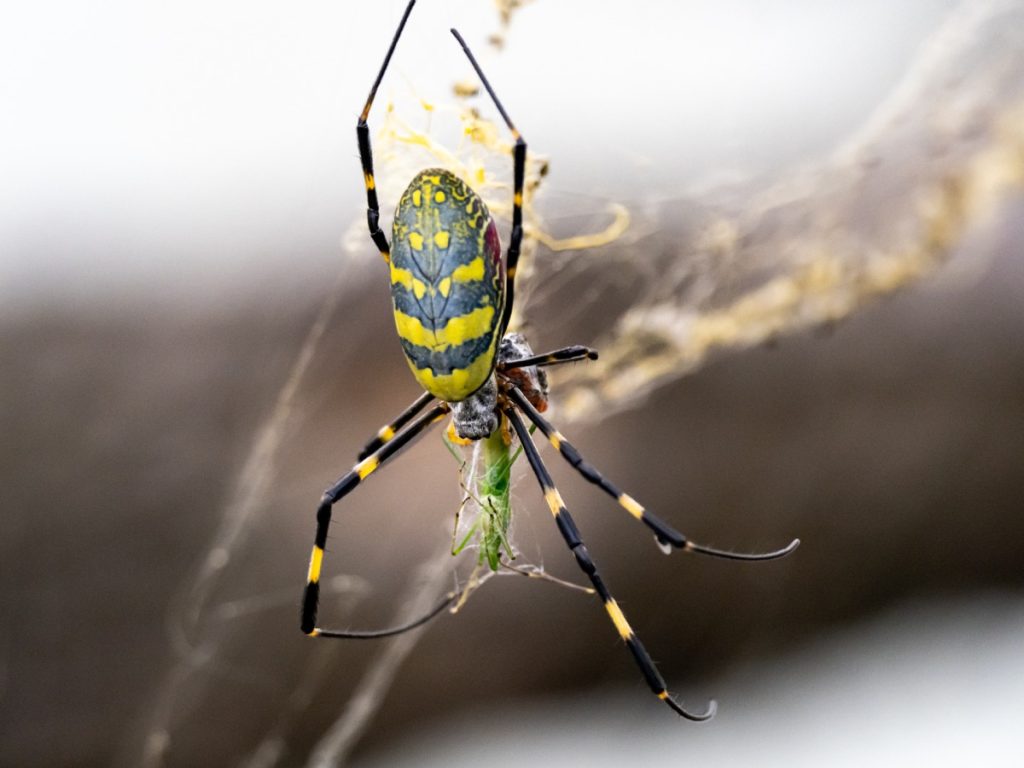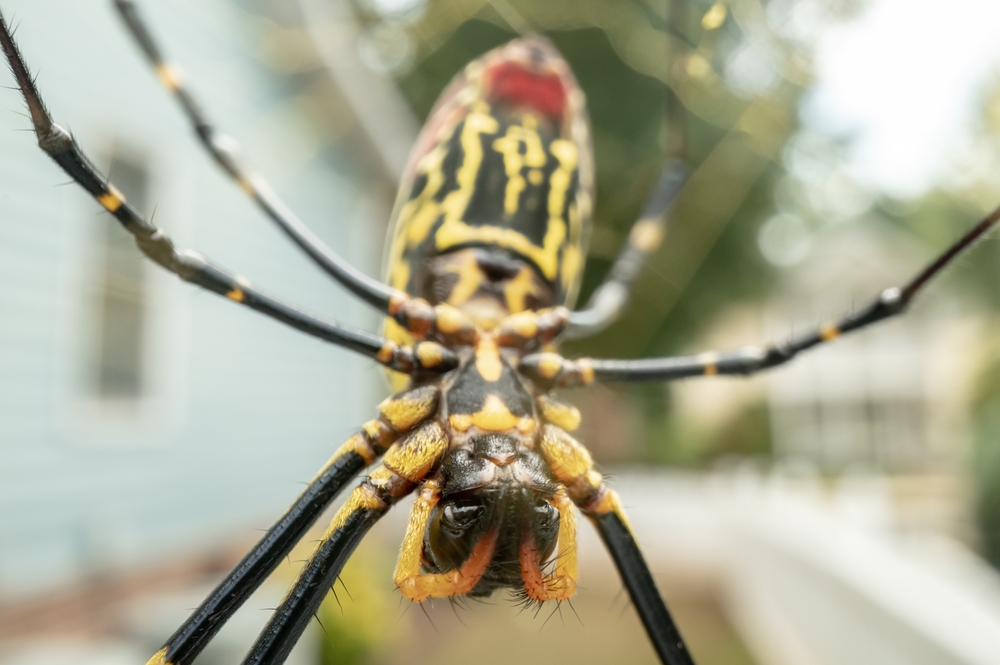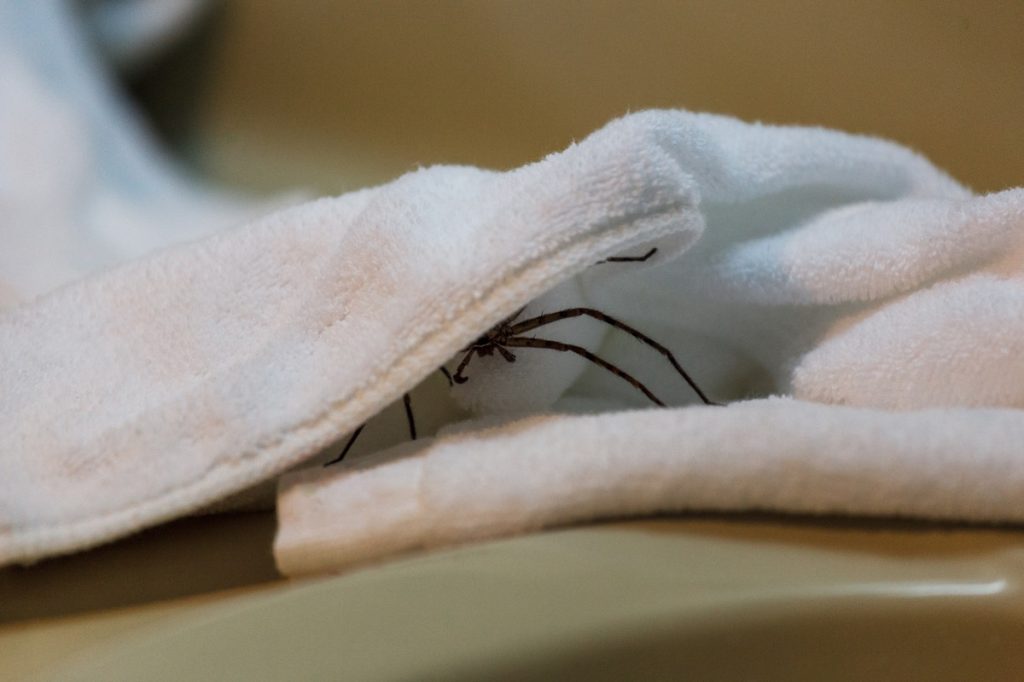Invasive Spiders With 3-Foot Webs Are Spreading and Can’t Be Stopped

No matter where we live, many of us have gotten used to seeing spiders around our yards and in our homes. Even arachnophobic people can appreciate that the skilled hunters help reduce other pesky bugs in our midst. Most tend to stay out of our way, setting themselves up in quiet corners of our homes like attics, basements, garages, and sheds. But now, some parts of the U.S. are dealing with new invasive spiders that weave three-foot webs and are spreading even further. Read on to see why experts say the latest eight-legged arrival can’t be stopped from expanding its new habitat.
RELATED: 9 Cleaning Habits That Attract Spiders.
Invasive Joro spiders are beginning to spread across the U.S.

You may be used to seeing harmless spiders like daddy long legs climbing around your property—or maybe even spot the occasional venomous brown recluse or black widow. But residents in some states are now dealing with a shocking new arrival as invasive Joro spiders have begun to spread to new areas.
The species—which also goes by the scientific name Trichonephila clavata—was unheard of in the U.S. until 2013, when it was first spotted in Georgia, according to The Economic Times. Experts theorize that the spiders made their way stateside from their native Asia as stowaways on shipping containers. Now, Joros have pushed further across Georgia as they begin their likely spread across the southeastern U.S.
RELATED: Black Widow Spiders May Go Extinct—But Venomous Brown Widows Are on the Rise.
The spiders can grow up to four inches long and produce large circular webs to catch prey.

Part of what’s made the Joro’s arrival so shocking probably has to do with its appearance. After hatching in the spring, females can grow up to four inches long by the time they’re full-sized adults around August, according to local Atlanta NBC affiliate WXIA. Their sheer numbers can also be daunting, with a single sac containing 400 to 500 eggs that can then travel on the wind after hatching to continue their spread.
Besides their physical size, the spiders also take up plenty of space with their strong, intricate webs that can span three feet in diameter, according to The Economic Times. Typically, Joros are similar to other arachnids in setting up camp near outdoor light sources where they can more easily catch their prey, hunting at all hours for common flying pests such as moths and mosquitos.
RELATED: Tarantula Sightings in Homes Are on the Rise: “Everyone’s Freaking Out”.
Scientists expect the species to push into new areas in the coming years.

Even if you’ve never seen a Joro spider yourself, it probably won’t be long before they become a common sight in more areas. According to a 2022 study published by researchers at the University of Georgia, the species is remarkably resilient, even showcasing the ability to survive freezing temperatures that can kill other closely related types of spiders.
Scientists say this survivability in extreme conditions—along with their “ballooning” abilities that allow them to spread in the wind—makes it all the more likely that Joro spiders will continue to spread across the U.S.
“Just by looking at that, it looks like the Joros could probably survive throughout most of the Eastern Seaboard here, which is pretty sobering,” Andy Davis, a research scientist in the Odum School of Ecology at the University of Georgia and author of the 2022 study, said in a press release.
RELATED: For more up-to-date information, sign up for our daily newsletter.
Fortunately, Joro spiders aren’t dangerous to humans and don’t appear to have a negative environmental impact.

There’s no question that many types of invasive species can be detrimental to new ecosystems. However, researchers from the University of Georgia study point out that Joro spiders stand apart from the typically dangerous monicker, so far creating no adverse effects or disruptions in their newfound home.
Arachnophobes will also be happy to discover they pose no immediate threat to humans or pets either. While you may accidentally walk into their strong webs, Joros don’t have particularly potent venom and will only bite when they are threatened or roughly handled. Researchers even noted that their fangs aren’t long enough to pierce human skin.
Ultimately, scientists say that human activity is as much to blame for the spider’s spread as it is the species’ resilience, noting that one researcher working on the 2022 study accidentally transported Joros to Nebraska. And since they’re such dedicated travelers, it’s probably best to get used to the sight of them.
“People should try to learn to live with them,” Davis said in the press release. “If they’re literally in your way, I can see taking a web down and moving them to the side, but they’re just going to be back next year.”
And unlike other invasive pests like the spotted lanternfly, there’s also no reason to become an ecological vigilante to slow their spread.
“The way I see it, there’s no point in excess cruelty where it’s not needed,” Benjamin Frick, co-author of the 2022 study and an undergraduate researcher at the Odium School of Ecology, said in the press release. “You have people with saltwater guns shooting them out of the trees and things like that, and that’s really just unnecessary.”